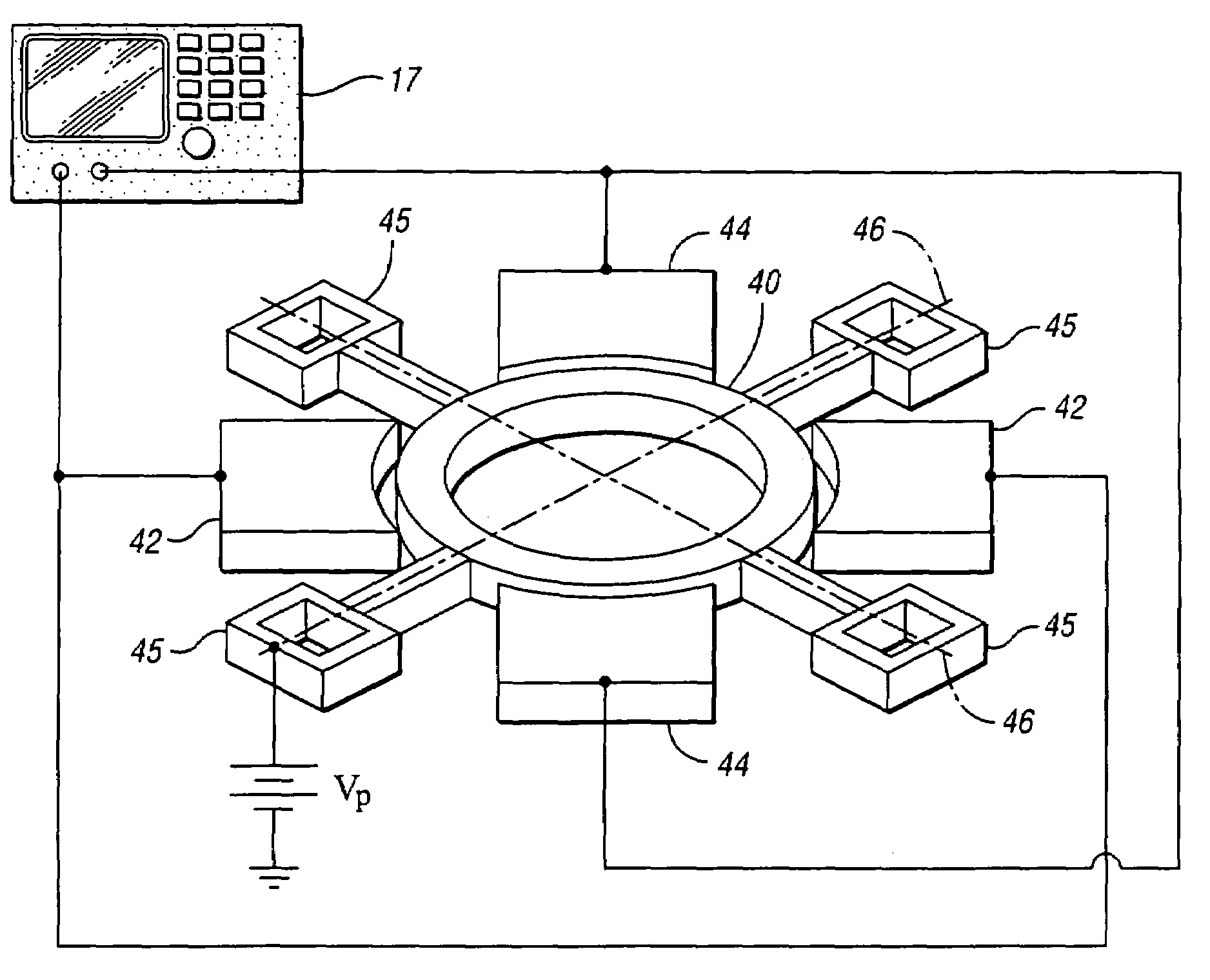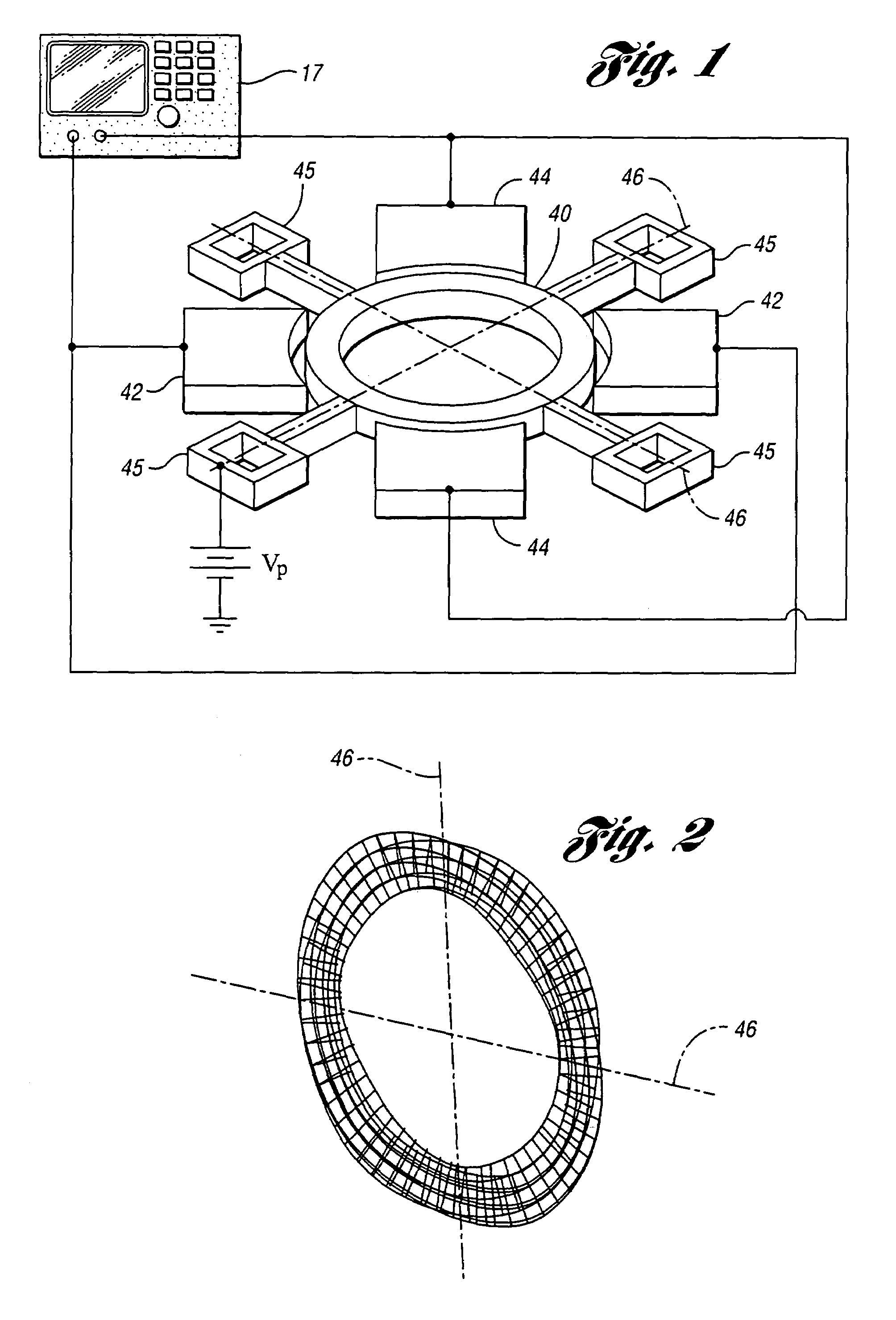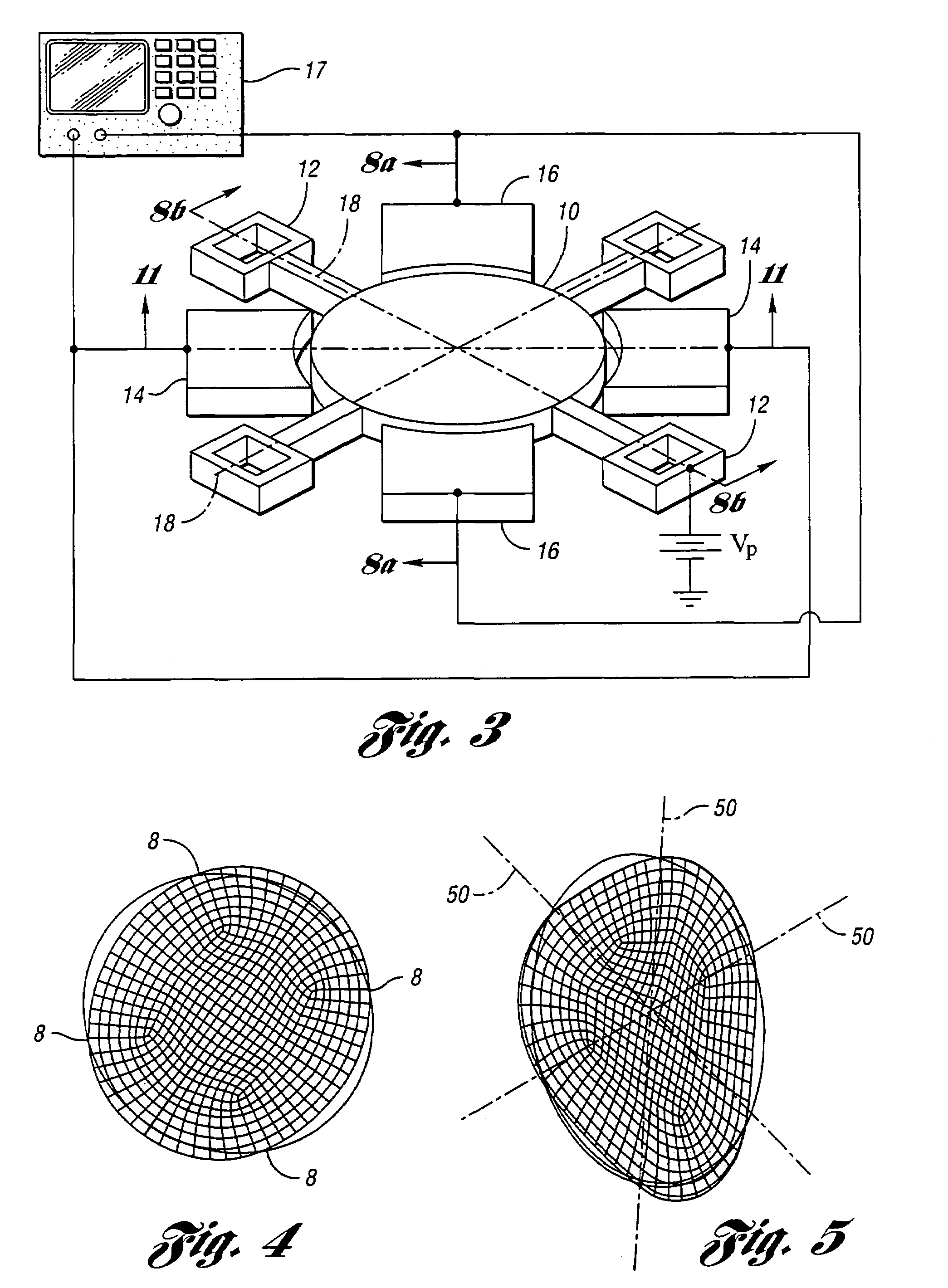Micromechanical resonator device and method of making a micromechanical device
- Summary
- Abstract
- Description
- Claims
- Application Information
AI Technical Summary
Benefits of technology
Problems solved by technology
Method used
Image
Examples
Embodiment Construction
[0083]In one embodiment of a micromechanical resonator device of the present invention, a disk is anchored at the side nodal points using a finite size anchor with absolute zero radial displacement at the side anchors. In contrast to finite size side anchors, a central anchor will not be a real nodal point as it will involve significant radial and tangential displacements. A perspective view of one embodiment of the invention in the form of a wine-glass mode disk resonator 10 with the associated anchoring structure and split electrode configuration is shown in FIG. 3. While four anchors 12 are shown in FIG. 3, it is to be understood that one, two or three anchors could be used without departing from the teachings of the present invention.
[0084]The proposed device is anchored using a novel non-intrusive structure strategically located at real nodal points with almost zero radial displacement. The effect of the tangential displacement is minimized by adjusting the size of the anchor a...
PUM
 Login to View More
Login to View More Abstract
Description
Claims
Application Information
 Login to View More
Login to View More - R&D
- Intellectual Property
- Life Sciences
- Materials
- Tech Scout
- Unparalleled Data Quality
- Higher Quality Content
- 60% Fewer Hallucinations
Browse by: Latest US Patents, China's latest patents, Technical Efficacy Thesaurus, Application Domain, Technology Topic, Popular Technical Reports.
© 2025 PatSnap. All rights reserved.Legal|Privacy policy|Modern Slavery Act Transparency Statement|Sitemap|About US| Contact US: help@patsnap.com



